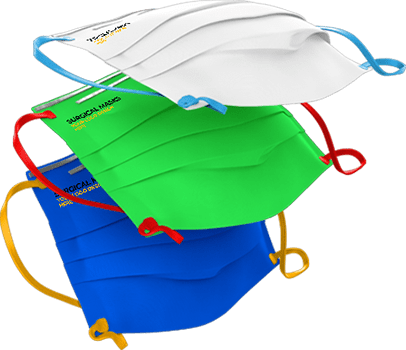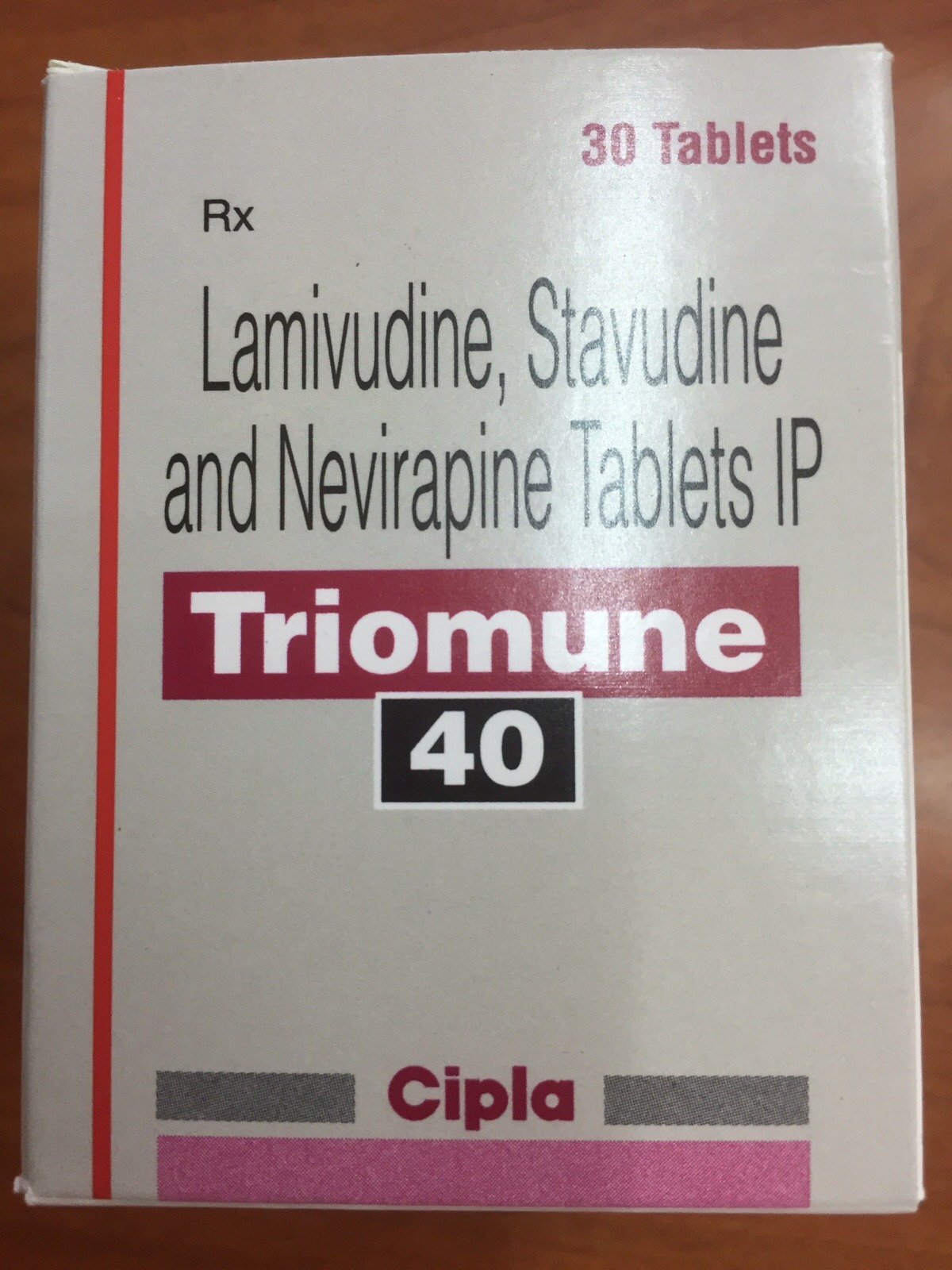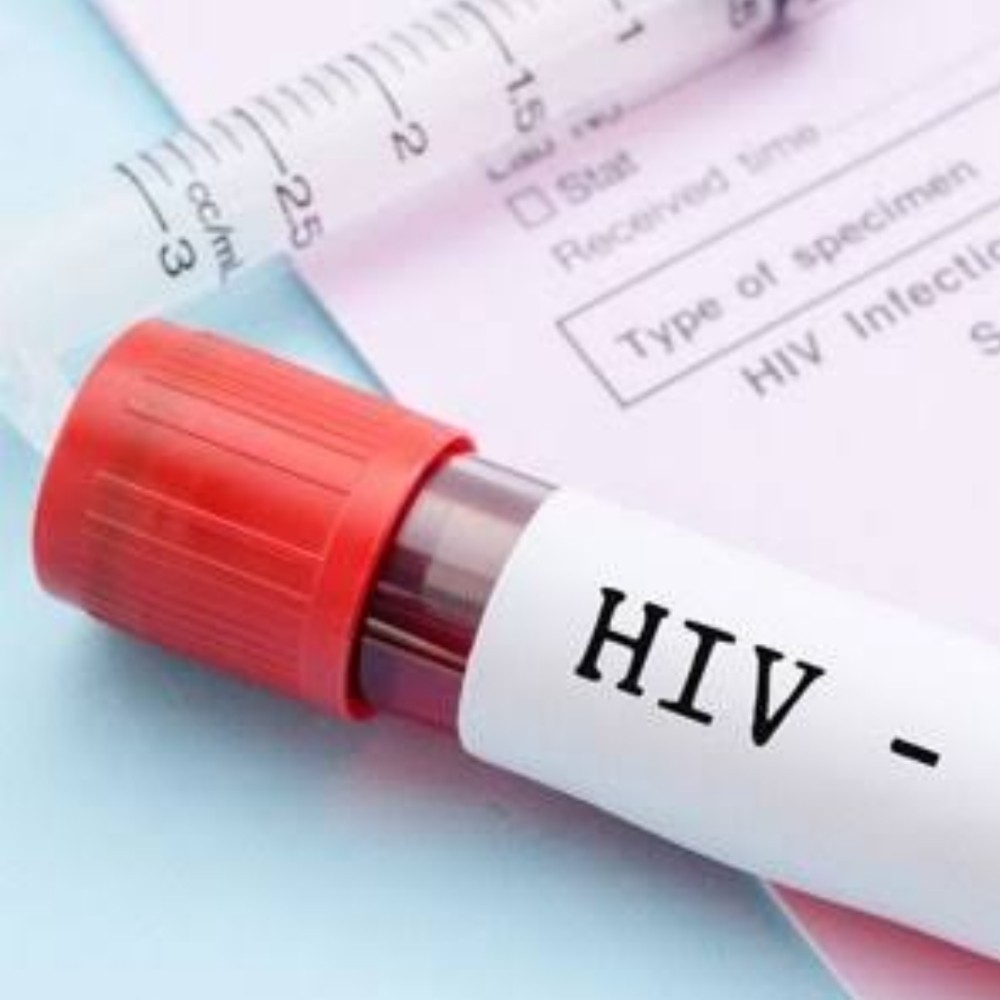HIV DRUGS/ Antiviral Drugs
Antiviral Drugs/ Anti HIV Drugs Supplier, Exporter & Manufacturers
Top Anti-HIV Drug Manufacturers
PHARMIKA INDIA PVT LTD. is a well-known anti-HIV and antiviral drug manufacturing company. We are well aware about how Anti-retroviral (ARV) therapy is an essential weapon to fight against HIV/AIDS. Hence, we are giving our best to manufacture and supply high-quality generic ARV treatments at affordable rates to patients around the world.
We are US FDA and WHO-GMP approved anti-retroviral and anti-viral drug suppliers and thus you can be assured of genuine product quality. The manufacturing process is carried out at our world-class manufacturing facility which makes use of state-of-art technology to produce the
best medicines.
Leading Anti-HIV and Anti-Viral Drug Exporters
Today, the world is witnessing its peak of deadly viral infections and diseases. From herpes, hepatitis, and HIV-AIDS to relatively new infections like COVID-19, the list of diseases is never-ending.
As a result, the world needs adequate supply of anti-retroviral and antiviral drugs at affordable prices. As antiviral and anti-HIV drug wholesalers and exporters, PHARMIKA takes the responsibility to make these medications available for all.
Our elaborate export network is spread across USA, UK, Africa, South East Asia, Australia and Gulf countries. We are well known for our undefeated on-time deliveries and family-like customer support. As a result, our business as anti-HIV and anti-viral exporters has multiplied by many folds over the years.
If you are also looking for a supply of genuine antiretroviral and antiviral drugs, you can feel free to contact us.
Antiviral/ Anti HIV
| Product/Composition | Strength | Form | Category | View |
|---|---|---|---|---|
| Valaciclovir Tablets | 500mg, 1000mg | Tablets | Antiviral/ Anti HIV | View |
| Valganciclovir Tablets | 450mg | Tablets | Antiviral/ Anti HIV | View |
| Tenofovir, Lamivudine And Efavirenz Tablets | 300mg + 300mg + 600mg | Tablets | Antiviral/ Anti HIV | View |
| Zidovudine Tablets | 100mg, 300mg | Tablets | Antiviral/ Anti HIV | View |
| Lamivudine, Nevirapine And Stavudine Tablets | 150mg + 200mg + 30mg | Tablets | Antiviral/ Anti HIV | View |
| Lamivudine And Stavudine Tablets | 150mg + 30mg | Tablets | Antiviral/ Anti HIV | View |
| Stavudine Capsules | 30mg, 40mg | Capsules | Antiviral/ Anti HIV | View |
| Lamivudine, Zidovudine And Nevirapine Tablets | 150mg + 300mg + 200mg | Tablets | Antiviral/ Anti HIV | View |
| Indinavir Sulphate Capsules | 400mg | Capsules | Antiviral/ Anti HIV | View |
| Efavirenz Tablets | 600mg | Tablets | Antiviral/ Anti HIV | View |
| Nevirapine Tablets | 200mg | Tablets | Antiviral/ Anti HIV | View |
| Lamivudine And Zidovudine Tablets | 150mg + 300mg | Tablets | Antiviral/ Anti HIV | View |
| Lamivudine Tablets | 100mg, 150mg | Tablets | Antiviral/ Anti HIV | View |
| Drug Class | Generic Name (Other names and acronyms) | Brand Name | FDA Approval Date |
|---|---|---|---|
| Nucleoside Reverse Transcriptase Inhibitors (NRTIs) | |||
| NRTIs block reverse transcriptase, an enzyme HIV needs to make copies of itself. | abacavir (abacavir sulfate, ABC) | Ziagen | December 17, 1998 |
| emtricitabine (FTC) | Emtriva | July 2, 2003 | |
| lamivudine (3TC) | Epivir | November 17, 1995 | |
| tenofovir disoproxil fumarate (tenofovir DF, TDF) | Viread | October 26, 2001 | |
| zidovudine (azidothymidine, AZT, ZDV) | Retrovir | March 19, 1987 | |
| Non-Nucleoside Reverse Transcriptase Inhibitors (NNRTIs) | |||
| NNRTIs bind to and later alter reverse transcriptase, an enzyme HIV needs to make copies of itself. | doravirine (DOR) | Pifeltro | August 30, 2018 |
| efavirenz (EFV) | Sustiva | September 17, 1998 | |
| etravirine (ETR) | Intelence | January 18, 2008 | |
| nevirapine (extended-release nevirapine, NVP) | Viramune | June 21, 1996 | |
| Viramune XR (extended release) | March 25, 2011 | ||
| rilpivirine (rilpivirine hydrochloride, RPV) | Edurant | May 20, 2011 | |
| Protease Inhibitors (PIs) | |||
| PIs block HIV protease, an enzyme HIV needs to make copies of itself. | atazanavir (atazanavir sulfate, ATV) | Reyataz | June 20, 2003 |
| darunavir (darunavir ethanolate, DRV) | Prezista | June 23, 2006 | |
| fosamprenavir (fosamprenavir calcium, FOS-APV, FPV) | Lexiva | October 20, 2003 | |
| ritonavir (RTV)*Although ritonavir is a PI, it is generally used as a pharmacokinetic enhancer as recommended in the Guidelines for the Use of Antiretroviral Agents in Adults and Adolescents with HIV and the Guidelines for the Use of Antiretroviral Agents in Pediatric HIV Infection. | Norvir | March 1, 1996 | |
| saquinavir (saquinavir mesylate, SQV) | Invirase | December 6, 1995 | |
| tipranavir (TPV) | Aptivus | June 22, 2005 | |
| Fusion Inhibitors | |||
| Fusion inhibitors block HIV from entering the CD4 cells of the immune system. | enfuvirtide (T-20) | Fuzeon | March 13, 2003 |
| CCR5 Antagonists | |||
| CCR5 antagonists block CCR5 coreceptors on the surface of certain immune cells that HIV needs to enter the cells. | maraviroc (MVC) | Selzentry | August 6, 2007 |
| Integrase Strand Transfer Inhibitor (INSTIs) | |||
| Integrase inhibitors block HIV integrase, an enzyme HIV needs to make copies of itself. | cabotegravir (cabotegravir sodium, CAB) | Vocabria | January 22, 2021 |
| dolutegravir (dolutegravir sodium, DTG) | Tivicay | August 13, 2013 | |
| raltegravir (raltegravir potassium, RAL) | Isentress | October 12, 2007 | |
| Isentress HD | May 26, 2017 | ||
| Attachment Inhibitors | |||
| Attachment inhibitors bind to the gp120 protein on the outer surface of HIV, preventing HIV from entering CD4 cells. | fostemsavir (fostemsavir tromethamine, FTR) | Rukobia | July 2, 2020 |
| Post-Attachment Inhibitors | |||
| Post-attachment inhibitors block CD4 receptors on the surface of certain immune cells that HIV needs to enter the cells. | ibalizumab-uiyk (Hu5A8, IBA, Ibalizumab, TMB-355, TNX-355) | Trogarzo | March 6, 2018 |
| Pharmacokinetic Enhancers | |||
| Pharmacokinetic enhancers are used in HIV treatment to increase the effectiveness of an HIV medicine included in an HIV regimen. | cobicistat (COBI, c) | Tybost | September 24, 2014 |
| Combination HIV Medicines | |||
| Combination HIV medicines contain two or more HIV medicines from one or more drug classes. | abacavir and lamivudine (abacavir sulfate / lamivudine, ABC / 3TC) | Epzicom | August 2, 2004 |
| abacavir, dolutegravir, and lamivudine (abacavir sulfate / dolutegravir sodium / lamivudine, ABC / DTG / 3TC) | Triumeq | August 22, 2014 | |
| abacavir, lamivudine, and zidovudine (abacavir sulfate / lamivudine / zidovudine, ABC / 3TC / ZDV) | Trizivir | November 14, 2000 | |
| atazanavir and cobicistat (atazanavir sulfate / cobicistat, ATV / COBI) | Evotaz | January 29, 2015 | |
| bictegravir, emtricitabine, and tenofovir alafenamide (bictegravir sodium / emtricitabine / tenofovir alafenamide fumarate, BIC / FTC / TAF) | Biktarvy | February 7, 2018 | |
| cabotegravir and rilpivirine (CAB and RPV, CAB plus RPV, Cabenuva kit, cabotegravir extended-release injectable suspension and rilpivirine extended-release injectable suspension) | Cabenuva | January 22, 2021 | |
| darunavir and cobicistat (darunavir ethanolate / cobicistat, DRV / COBI) | Prezcobix | January 29, 2015 | |
| darunavir, cobicistat, emtricitabine, and tenofovir alafenamide (darunavir ethanolate / cobicistat / emtricitabine / tenofovir AF, darunavir ethanolate / cobicistat / emtricitabine / tenofovir alafenamide, darunavir / cobicistat / emtricitabine / tenofovir AF, darunavir / cobicistat / emtricitabine / tenofovir alafenamide fumarate, DRV / COBI / FTC / TAF) | Symtuza | July 17, 2018 | |
| dolutegravir and lamivudine (dolutegravir sodium / lamivudine, DTG / 3TC) | Dovato | April 8, 2019 | |
| dolutegravir and rilpivirine (dolutegravir sodium / rilpivirine hydrochloride, DTG / RPV) | Juluca | November 21, 2017 | |
| doravirine, lamivudine, and tenofovir disoproxil fumarate (doravirine / lamivudine / TDF, doravirine / lamivudine / tenofovir DF, DOR / 3TC / TDF) | Delstrigo | August 30, 2018 | |
| efavirenz, emtricitabine, and tenofovir disoproxil fumarate (efavirenz / emtricitabine / tenofovir DF, EFV / FTC / TDF) | Atripla | July 12, 2006 | |
| efavirenz, lamivudine, and tenofovir disoproxil fumarate (EFV / 3TC / TDF) | Symfi | March 22, 2018 | |
| efavirenz, lamivudine, and tenofovir disoproxil fumarate (EFV / 3TC / TDF) | Symfi Lo | February 5, 2018 | |
| elvitegravir, cobicistat, emtricitabine, and tenofovir alafenamide (elvitegravir / cobicistat / emtricitabine / tenofovir alafenamide fumarate, EVG / COBI / FTC / TAF) | Genvoya | November 5, 2015 | |
| elvitegravir, cobicistat, emtricitabine, and tenofovir disoproxil fumarate (QUAD, EVG / COBI / FTC / TDF) | Stribild | August 27, 2012 | |
| emtricitabine, rilpivirine, and tenofovir alafenamide (emtricitabine / rilpivirine / tenofovir AF, emtricitabine / rilpivirine / tenofovir alafenamide fumarate, emtricitabine / rilpivirine hydrochloride / tenofovir AF, emtricitabine / rilpivirine hydrochloride / tenofovir alafenamide, emtricitabine / rilpivirine hydrochloride / tenofovir alafenamide fumarate, FTC / RPV / TAF) | Odefsey | March 1, 2016 | |
| emtricitabine, rilpivirine, and tenofovir disoproxil fumarate (emtricitabine / rilpivirine hydrochloride / tenofovir disoproxil fumarate, emtricitabine / rilpivirine / tenofovir, FTC / RPV / TDF) | Complera | August 10, 2011 | |
| emtricitabine and tenofovir alafenamide (emtricitabine / tenofovir AF, emtricitabine / tenofovir alafenamide fumarate, FTC / TAF) | Descovy | April 4, 2016 | |
| emtricitabine and tenofovir disoproxil fumarate (emtricitabine / tenofovir DF, FTC / TDF) | Truvada | August 2, 2004 | |
| lamivudine and tenofovir disoproxil fumarate (Temixys, 3TC / TDF) | Cimduo | February 28, 2018 | |
| lamivudine and zidovudine (3TC / ZDV) | Combivir | September 27, 1997 | |
| lopinavir and ritonavir (ritonavir-boosted lopinavir, LPV/r, LPV / RTV) | Kaletra | September 15, 2000 |
HIV
Description of HIV
Human immunodeficiency virus infection / acquired immunodeficiency syndrome (HIV/AIDS) is a disease of the human immune system caused by infection with human immunodeficiency virus (HIV). During the initial infection, a person may experience a brief period of influenza-like illness. This is typically followed by a prolonged period without symptoms. As the illness progresses, it interferes more and more with the immune system, making the person much more likely to get infections, including opportunistic infections and tumors that do not usually affect people who have working immune systems.
Description of AIDS
Acquired immunodeficiency syndrome (AIDS) is defined in terms of either a CD4+ T cell count below 200 cells per L or the occurrence of specific diseases in association with an HIV infection. In the absence of specific treatment, around half the people infected with HIV develop AIDS within ten years. The most common initial conditions that alert to the presence of AIDS are pneumocystis pneumonia (40%), cachexia in the form of HIV wasting syndrome (20%) and esophageal candidiasis. Other common signs include recurring respiratory tract infections.
Opportunistic infections may be caused by bacteria, viruses, fungi and parasites that are normally controlled by the immune system. Which infections occur partly depends on what organisms are common in the person’s environment. These infections may affect nearly every organ system. People with AIDS have an increased risk of developing various viral induced cancers
Origination of HIV
Genetic research indicates that HIV originated in west-central Africa during the early twentieth century. AIDS was first recognized by the Centers for Disease Control and Prevention (CDC) in 1981 and its cause HIV infection was identified in the early part of the decade.[5] Since its discovery, AIDS has caused nearly 30 million deaths (as of 2009). As of 2010, approximately 34 million people are living with HIV globally. AIDS is considered a pandemic a disease outbreak which is present over a large area and is actively spreading.
Effect of HIV on the immunity system
Pathophysiology After the virus enters the body there is a period of rapid viral replication, leading to an abundance of virus in the peripheral blood. During primary infection, the level of HIV may reach several million virus particles per milliliter of blood. This response is accompanied by a marked drop in the number of circulating CD4+ T cells. The acute viremia is almost invariably associated with activation of CD8+ T cells, which kill HIV-infected cells, and subsequently with antibody production, or seroconversion. The CD8+ T cell response is thought to be important in controlling virus levels, which peak and then decline, as the CD4+ T cell counts recover. A good CD8+ T cell response has been linked to slower disease progression and a better prognosis, though it does not eliminate the virus.
Spreading of HIV
HIV is transmitted by three main routes: sexual contact, exposure to infected body fluids or tissues, and from mother to child during pregnancy, delivery, or breastfeeding (known as vertical transmission). There is no risk of acquiring HIV if exposed to feces, nasal secretions, saliva, sputum, sweat, tears, urine, or vomit unless these are contaminated with blood. It is possible to be co-infected by more than one strain of HIV a condition known as HIV superinfection
Additionally, people with AIDS frequently have systemic symptoms such as prolonged fevers, sweats (particularly at night), swollen lymph nodes, chills, weakness, and weight loss. Diarrhea is another common symptom present in about 90% of people with AIDS.
Testing
Most people infected with HIV develop specific antibodies (i.e. seroconvert) within three to twelve weeks of the initial infection. Diagnosis of primary HIV before seroconversion is done by measuring HIV-RNA or p24 antigen. Positive results obtained by antibody or PCR testing are confirmed either by a different antibody or by PCR.
Antibody tests in children younger than 18 months are typically inaccurate due to the continued presence of maternal antibodies. Thus HIV infection can only be diagnosed by PCR testing for HIV RNA or DNA, or via testing for the p24 antigen.
Need for Medication
If HIV is allowed to reproduce, or “replicate,” inside the body, it will cause damage to the immune system. Ultimately, the immune system becomes so weak that the body becomes vulnerable to other diseases. This is the point at which a person is usually diagnosed with full-blown AIDS, which can result in death due to other opportunistic infections like Tuberculosis, etc
Anti-HIV drugs can help HIV-infected people live longer. Treatment, therefore, is a very important option, and people living with HIV should consider starting treatment before the virus has had a chance to do serious damage to the immune system.
Antiretroviral drugs
The management of HIV/AIDS normally includes the use of multiple antiretroviral drugs in an attempt to control HIV infection. There are several classes of antiretroviral agents that act on different stages of the HIV life-cycle. it can take 10-15 years for an HIV-infected person to develop AIDS; antiretroviral drugs can slow down the process even further.
Antiretroviral (ARV) drugs are classified by the phase of the retrovirus life-cycle that the drug inhibits.
There are currently 5 major classes of antiretroviral drugs :
Binding and Fusion inhibitors
Nucleoside and Nucleotide Analogue Reverse Transcriptase Inhibitors (NRTI)
Non-Nucleoside Reverse Transcriptase Inhibitors (NNRTI)






